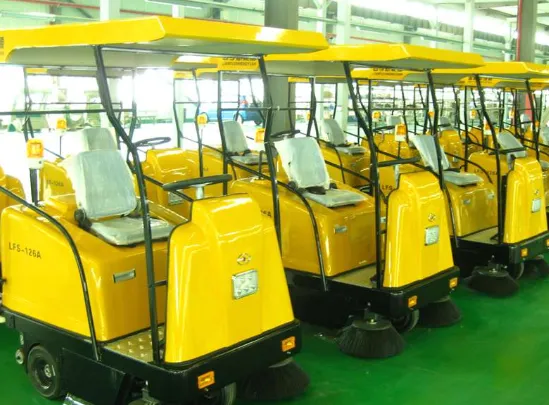
-
 Afrikaans
Afrikaans -
 Albanian
Albanian -
 Amharic
Amharic -
 Arabic
Arabic -
 Armenian
Armenian -
 Azerbaijani
Azerbaijani -
 Basque
Basque -
 Belarusian
Belarusian -
 Bengali
Bengali -
 Bosnian
Bosnian -
 Bulgarian
Bulgarian -
 Catalan
Catalan -
 Cebuano
Cebuano -
 China
China -
 China (Taiwan)
China (Taiwan) -
 Corsican
Corsican -
 Croatian
Croatian -
 Czech
Czech -
 Danish
Danish -
 Dutch
Dutch -
 English
English -
 Esperanto
Esperanto -
 Estonian
Estonian -
 Finnish
Finnish -
 French
French -
 Frisian
Frisian -
 Galician
Galician -
 Georgian
Georgian -
 German
German -
 Greek
Greek -
 Gujarati
Gujarati -
 Haitian Creole
Haitian Creole -
 hausa
hausa -
 hawaiian
hawaiian -
 Hebrew
Hebrew -
 Hindi
Hindi -
 Miao
Miao -
 Hungarian
Hungarian -
 Icelandic
Icelandic -
 igbo
igbo -
 Indonesian
Indonesian -
 irish
irish -
 Italian
Italian -
 Japanese
Japanese -
 Javanese
Javanese -
 Kannada
Kannada -
 kazakh
kazakh -
 Khmer
Khmer -
 Rwandese
Rwandese -
 Korean
Korean -
 Kurdish
Kurdish -
 Kyrgyz
Kyrgyz -
 Lao
Lao -
 Latin
Latin -
 Latvian
Latvian -
 Lithuanian
Lithuanian -
 Luxembourgish
Luxembourgish -
 Macedonian
Macedonian -
 Malgashi
Malgashi -
 Malay
Malay -
 Malayalam
Malayalam -
 Maltese
Maltese -
 Maori
Maori -
 Marathi
Marathi -
 Mongolian
Mongolian -
 Myanmar
Myanmar -
 Nepali
Nepali -
 Norwegian
Norwegian -
 Norwegian
Norwegian -
 Occitan
Occitan -
 Pashto
Pashto -
 Persian
Persian -
 Polish
Polish -
 Portuguese
Portuguese -
 Punjabi
Punjabi -
 Romanian
Romanian -
 Russian
Russian -
 Samoan
Samoan -
 Scottish Gaelic
Scottish Gaelic -
 Serbian
Serbian -
 Sesotho
Sesotho -
 Shona
Shona -
 Sindhi
Sindhi -
 Sinhala
Sinhala -
 Slovak
Slovak -
 Slovenian
Slovenian -
 Somali
Somali -
 Spanish
Spanish -
 Sundanese
Sundanese -
 Swahili
Swahili -
 Swedish
Swedish -
 Tagalog
Tagalog -
 Tajik
Tajik -
 Tamil
Tamil -
 Tatar
Tatar -
 Telugu
Telugu -
 Thai
Thai -
 Turkish
Turkish -
 Turkmen
Turkmen -
 Ukrainian
Ukrainian -
 Urdu
Urdu -
 Uighur
Uighur -
 Uzbek
Uzbek -
 Vietnamese
Vietnamese -
 Welsh
Welsh -
 Bantu
Bantu -
 Yiddish
Yiddish -
 Yoruba
Yoruba -
 Zulu
Zulu
Feb . 03, 2025 02:35
Back to list
grp clarifier
In the ever-evolving landscape of water and wastewater treatment, the concept and application of GRP clarifiers have emerged as a cornerstone technology. These clarifiers, constructed from Glass Reinforced Plastic (GRP), offer a fusion of resilience, efficiency, and cost-effectiveness, rendering them indispensable in both municipal and industrial spheres. Here we delve into the tangible benefits and applications of GRP clarifiers, drawing from real-world experiences and expert insights to establish their authority and trust in the field.
Furthermore, the use of GRP clarifiers aligns with sustainability goals—a growing priority for industries worldwide. The manufacturing process of GRP components generally entails lower energy consumption compared to traditional materials. This, combined with their extended lifespan and recyclability, enables industries to make strides towards more eco-friendly operations. Trustworthiness is perhaps one of the most critical attributes of GRP clarifiers. The industry's stringent safety certifications and standards ensure that GRP constructions meet or exceed necessary guidelines, thus offering assurance of quality and reliability. Testimonials from environmental engineers and plant managers often highlight their confidence in GRP clarifiers because they meet expected performance metrics under rigorous testing conditions, offering peace of mind about compliance and safety. Case studies fortify this viewpoint. For example, a large textile manufacturing facility, previously plagued by frequent shutdowns due to corrosion in their steel clarifiers, switched to GRP clarifiers. Post-installation, they reported a remarkable reduction in downtime, resulting in increased productivity and lowered monetary loss attributed to maintenance. The facility managers cited the robust nature and ease of cleaning as significant contributors to this positive outcome. In conclusion, the application of GRP clarifiers transcends traditional benefits, encompassing a wide array of advantages that collectively support their rising prevalence in the water treatment industry. User experiences and technical studies underwrite their expertise and trustworthiness, projecting a compelling case for their use in diverse environmental and operational conditions. As sectors continue to prioritize sustainability and cost-efficiency, GRP clarifiers are poised to remain at the forefront of innovative solutions in modern industrial applications.


Furthermore, the use of GRP clarifiers aligns with sustainability goals—a growing priority for industries worldwide. The manufacturing process of GRP components generally entails lower energy consumption compared to traditional materials. This, combined with their extended lifespan and recyclability, enables industries to make strides towards more eco-friendly operations. Trustworthiness is perhaps one of the most critical attributes of GRP clarifiers. The industry's stringent safety certifications and standards ensure that GRP constructions meet or exceed necessary guidelines, thus offering assurance of quality and reliability. Testimonials from environmental engineers and plant managers often highlight their confidence in GRP clarifiers because they meet expected performance metrics under rigorous testing conditions, offering peace of mind about compliance and safety. Case studies fortify this viewpoint. For example, a large textile manufacturing facility, previously plagued by frequent shutdowns due to corrosion in their steel clarifiers, switched to GRP clarifiers. Post-installation, they reported a remarkable reduction in downtime, resulting in increased productivity and lowered monetary loss attributed to maintenance. The facility managers cited the robust nature and ease of cleaning as significant contributors to this positive outcome. In conclusion, the application of GRP clarifiers transcends traditional benefits, encompassing a wide array of advantages that collectively support their rising prevalence in the water treatment industry. User experiences and technical studies underwrite their expertise and trustworthiness, projecting a compelling case for their use in diverse environmental and operational conditions. As sectors continue to prioritize sustainability and cost-efficiency, GRP clarifiers are poised to remain at the forefront of innovative solutions in modern industrial applications.
Next:
Related Products









